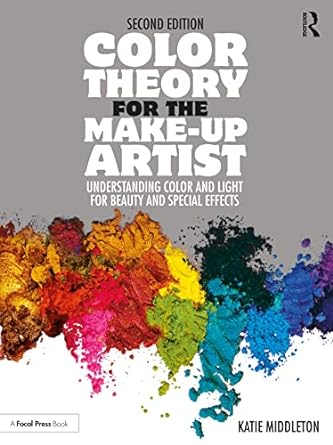
Click on Images Below Article to Shop
Color theory, a fundamental concept in art and design, plays a crucial role in the world of makeup. It’s the science and art of using colors harmoniously to achieve aesthetically pleasing results. In makeup, color theory helps artists enhance features, correct imperfections, and create balanced, flattering looks for diverse skin tones.
Understanding the Basics
At the heart of color theory is the color wheel, which organizes colors in a circular format, showcasing the relationships between primary, secondary, and tertiary colors. Primary colors (red, blue, and yellow) are the foundation, mixing to create secondary colors (green, orange, and purple). These, in turn, combine to form tertiary colors.
Complementary Colors
Complementary colors, located opposite each other on the color wheel, create high contrast and vibrant looks when paired together. For instance, red and green, blue and orange, or purple and yellow can make each other stand out. In makeup, understanding complementary colors is essential for tasks such as concealing imperfections—green correctors neutralize redness, while peach or orange correctors counteract blue undertones like dark circles.
Analogous Colors
Analogous colors, found next to each other on the color wheel, offer a more harmonious and cohesive look. These colors blend seamlessly, making them ideal for creating natural and gradient effects in eyeshadows or blushes. For example, a look combining shades of pink, red, and orange can appear soft and romantic.
Warm vs. Cool Tones
Colors can also be classified as warm or cool based on their undertones. Warm tones (reds, oranges, yellows) add warmth and vibrancy, while cool tones (blues, greens, purples) provide a calming and soothing effect. Knowing whether a person has warm, cool, or neutral undertones helps in selecting the most flattering foundation, lipstick, and eyeshadow shades.
Color Harmony in Makeup
Creating a harmonious makeup look involves balancing colors to enhance natural beauty. This means considering the interplay between eye, hair, and skin color. For example, warm-toned individuals often look stunning in golds, bronzes, and earthy hues, while cool-toned individuals shine in silvers, blues, and jewel tones.
Experimentation and Personal Expression
While color theory provides guidelines, makeup is ultimately a form of personal expression. Experimentation is encouraged to discover what works best for each individual. Bold, unconventional color choices can make a powerful statement, breaking traditional boundaries and showcasing creativity.
Conclusion
Mastering color theory in makeup allows artists and enthusiasts alike to create looks that are both aesthetically pleasing and personally flattering. By understanding the relationships between colors, one can skillfully enhance features, correct imperfections, and express individuality through the artful application of makeup.your gear says about you and embrace the adventure that lies ahead!
Click on Images Below to Shop
As an Amazon Associate I earn from qualifying purchases. Copyright ©2024 WilsonWanders.com








